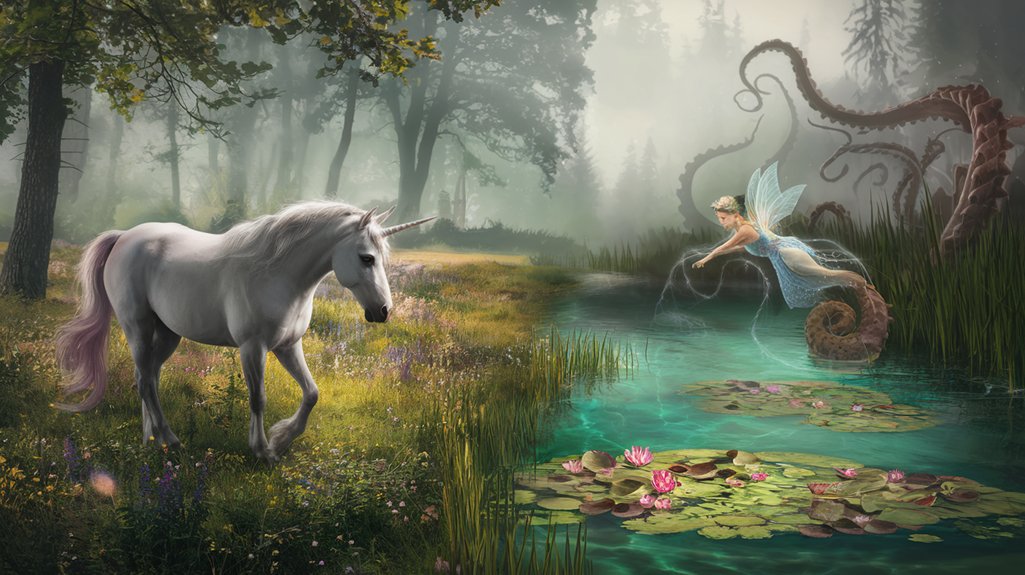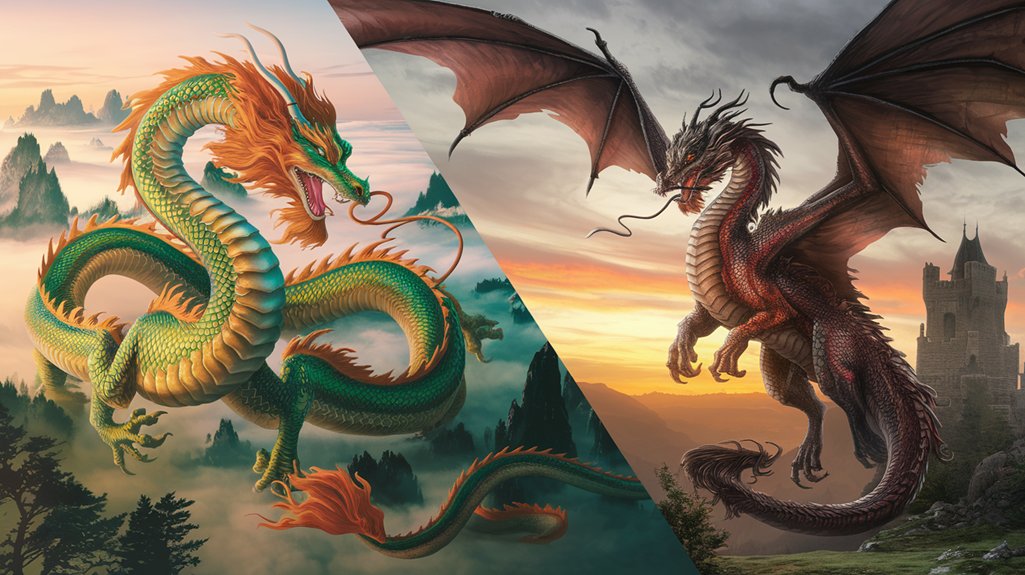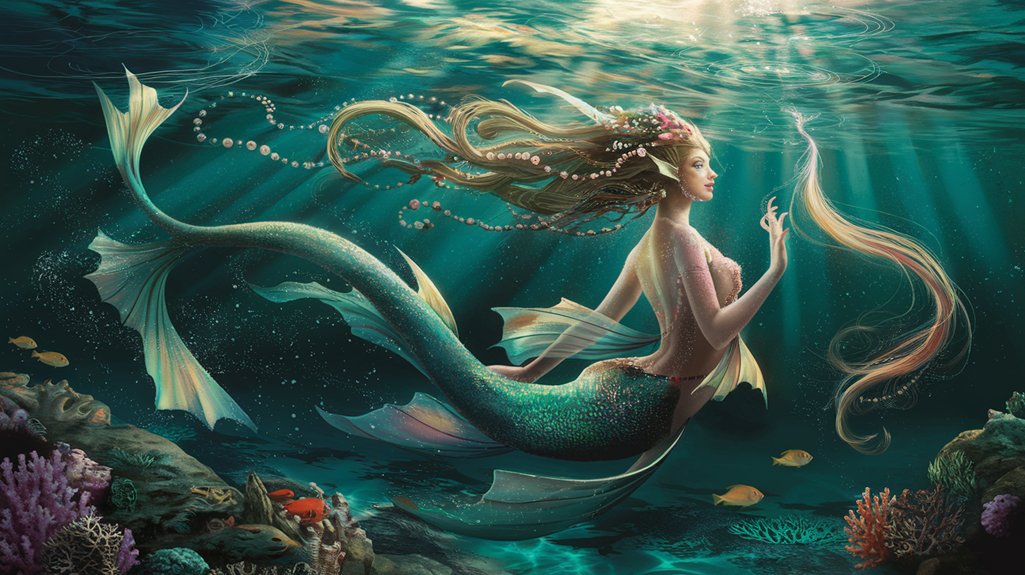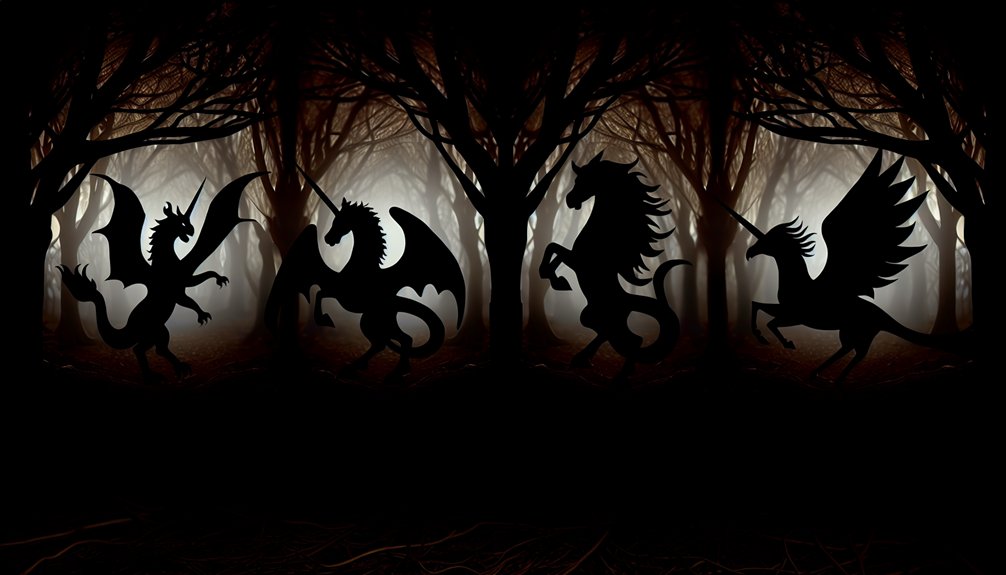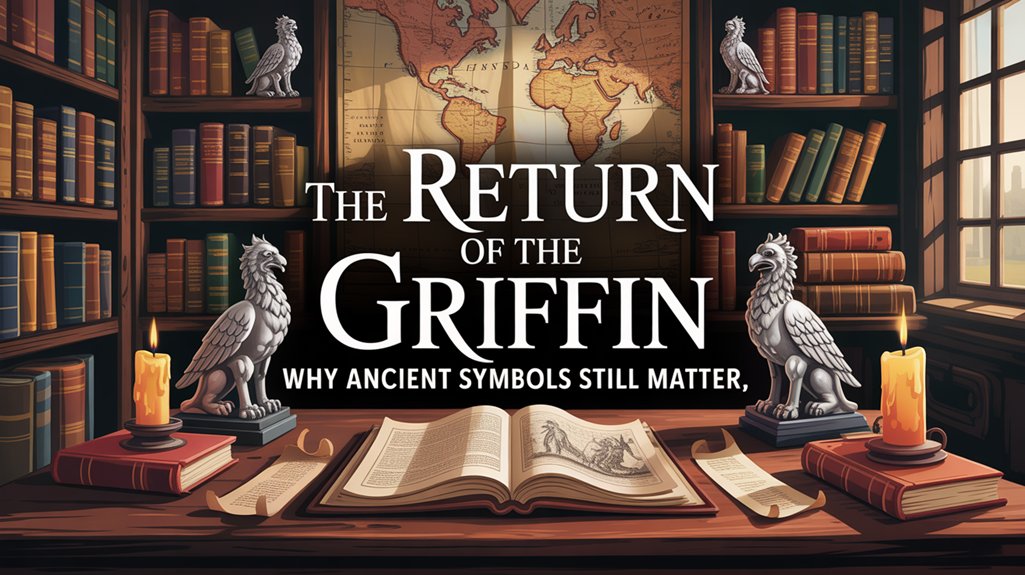Throughout history, you’ve likely heard tales that blur reality and imagination, where mythical creatures were once believed to roam the earth. From the mysterious kraken lurking beneath ocean waves to the ethereal unicorns that captivated regal courts, these beings aren’t just stories—they’re reflections of cultural narratives and human curiosity. As you explore these fascinating myths, consider how they shaped societies and inspired generations. What truths might lie behind these enduring legends?
Table of Contents
ToggleKey Takeaways
- Unicorns were believed to be real, with narwhal tusks and rhinoceros fossils often mistaken for their horns.
- Mermaids captured the imagination of sailors, blending beauty with danger and potentially explained by sightings of manatees or dugongs.
- The Kraken, a colossal sea monster from Norse mythology, was feared by sailors who misinterpreted giant squids.
- Dragons, common in various cultures, were thought real due to dinosaur fossils and exaggerated reports of large reptiles.
- The Yeti, rooted in Himalayan folklore, was believed to exist due to misidentified bear tracks or other wildlife.
The Kraken
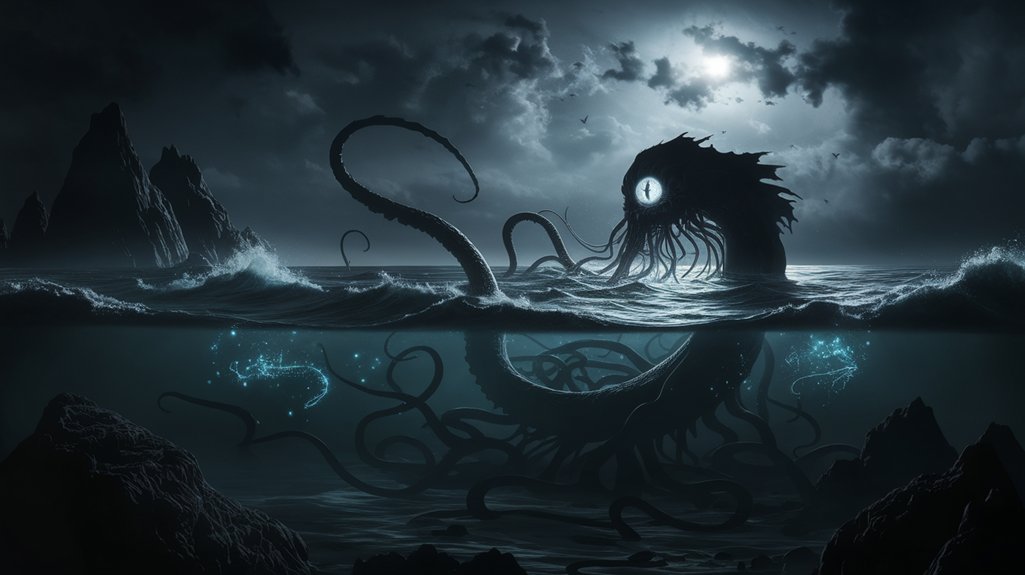
The Kraken, a legendary sea monster, has long captured the imagination of sailors and storytellers alike. You’ll find its roots buried deep in ocean legends, particularly those from Norse mythology. Picture yourself as a sailor in the 18th century, navigating the uncharted waters of the North Atlantic. The sea is vast, unpredictable, and teeming with tales of monstrous beings lurking beneath. Among these sea monsters, the Kraken was feared for its colossal size and ability to drag entire ships into the abyss with its tentacles.
Culturally, the Kraken reflects the trepidation ancient mariners held toward the unknown depths. Stories of such creatures served not only as thrilling narratives but also as cautionary tales about the dangers of venturing too far from familiar shores. By understanding these legends, you gain insight into the collective psyche of past civilizations, offering a glimpse into their fears, beliefs, and the power of storytelling.
The Dragon
Imagine a world where dragons soar through the skies, their majestic forms casting shadows over ancient landscapes. Throughout history, dragon legends have captivated countless cultures, each weaving unique tales that reflect their societal values and fears. In China, dragons symbolize power, wisdom, and auspiciousness, often depicted as benevolent creatures governing water and rain. Meanwhile, in European lore, dragons are portrayed as fearsome beasts, guarding treasures or terrorizing villages, reflecting a complex blend of admiration and dread.
You might find it fascinating that these mythical creatures often served as allegories in tales, teaching moral lessons or representing natural forces beyond human control. Dragon symbolism transcends mere storytelling; it encapsulates humanity’s attempt to understand and explain the world. By examining these legends, you gain insight into the cultural psyche of civilizations, revealing how they envisioned their place within the universe, where the line between myth and reality blurred intriguingly.
The Unicorn
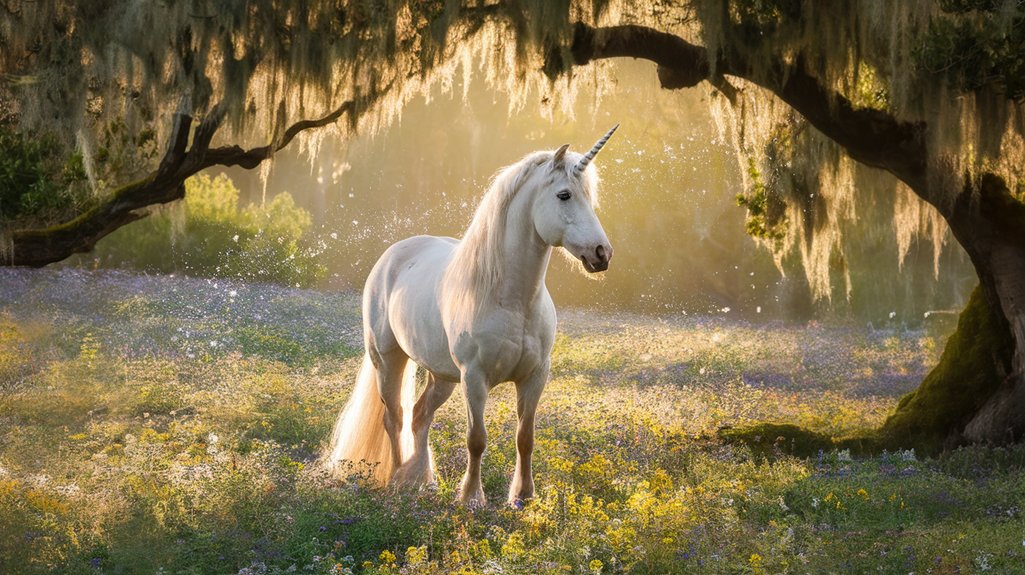
When you explore the unicorn’s origins, you’ll find it’s more than just a fanciful creature; it’s a symbol deeply rooted in various cultural narratives, from ancient Mesopotamian art to medieval European lore. Across time, the unicorn has represented purity, grace, and the unattainable, reflecting humanity’s desire for the extraordinary. Yet, scientific misinterpretations, like confusing rhino fossils for unicorns, reveal how our quest for magic often blurs the lines between myth and reality.
Origins and Folklore
Although unicorns captivate imaginations worldwide, their origins are deeply rooted in ancient folklore and cultural narratives. You’ll find that mythical origins of unicorns stretch back to early Mesopotamian art, where single-horned animals first appeared. As you explore folklore evolution, notice how the unicorn’s image transformed over centuries. In ancient Greek texts, historians like Ctesias described unicorn-like creatures, blending reality and myth. These stories traveled and morphed through cultures, influencing medieval European tales where unicorns symbolized purity and grace. Asian folklore offers its own variations, such as the Chinese qilin, illustrating how diverse cultures reimagined unicorns. Understanding these narratives helps you see that unicorns are more than fantasy—they’re a tapestry of human imagination and cultural storytelling across time.
Symbolism in Culture
Throughout history, the unicorn has served as a powerful symbol in various cultural contexts, embodying purity, grace, and transcendence. You’ll find that many cultures have embraced the mythological representation of the unicorn, each attributing its own layers of meaning. In medieval Europe, the unicorn often symbolized Christ’s purity and was a fixture in religious art. Meanwhile, in Eastern traditions, it represented wisdom and good fortune. By understanding these cultural symbolisms, you can see how the unicorn transcends mere myth, weaving itself into the fabric of human belief. Its ethereal nature captivates the imagination, urging societies to seek the unattainable. As a symbol, the unicorn continues to inspire, reminding us of the ideals we strive to embody and preserve.
Scientific Misinterpretations
Despite the allure and mystique surrounding unicorns, scientific misinterpretations have often clouded our understanding of these mythical creatures. You might be surprised to learn that historical misconceptions stemmed from early travelers encountering rhinoceroses or narwhal tusks, mistaking them for unicorn horns. Scientific discoveries were limited, leading observers to weave fantastical tales. The fascination persisted, fueled by medieval texts and explorers’ exaggerated accounts, blending reality and myth.
In the 16th century, explorers brought back narwhal tusks, claiming they were unicorn horns. This only deepened the belief in unicorns, blurring the lines between myth and reality. It’s fascinating how these scientific misinterpretations shaped our cultural viewpoint, illustrating how easily wonder can obscure scientific accuracy, transforming reality into legend that endures through time.
The Phoenix
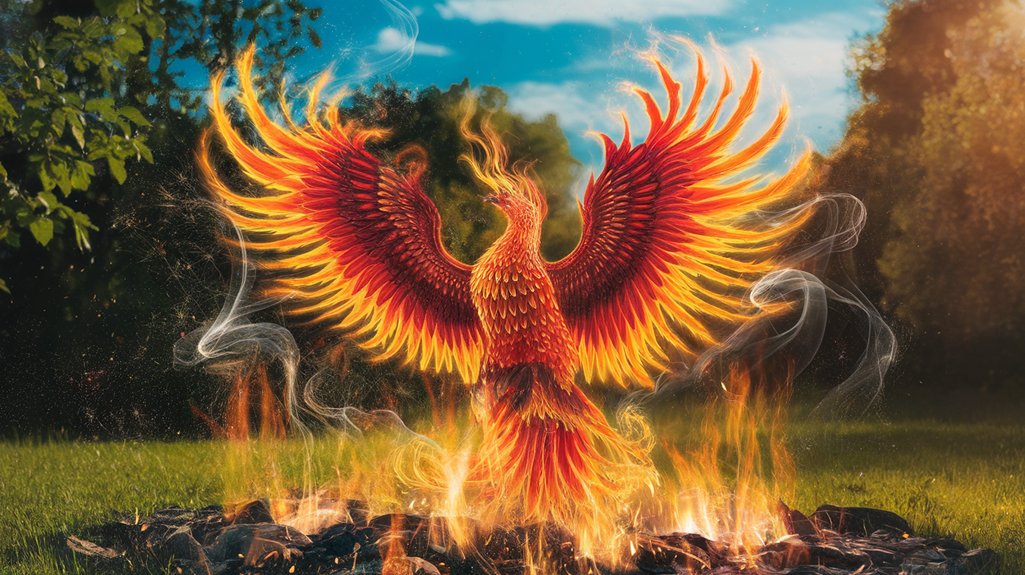
The phoenix, a mythical bird that captures the imagination across cultures, symbolizes rebirth and renewal through its legendary cycle of life, death, and resurrection. Imagine a creature that bursts into flames only to rise anew from its own ashes—a powerful metaphor for transformation. You can find this enchanting symbol in ancient Egyptian and Greek mythologies, where it represents eternal life and the cyclical nature of existence.
Fire symbolism plays a crucial role in understanding the phoenix’s allure. Throughout history, fire has been seen as both destructive and purifying, a dual nature that perfectly encapsulates the phoenix rebirth. In a world where life is often unpredictable, the phoenix offers reassurance that new beginnings can emerge from destruction.
The Banshee
You might not know that the Banshee, a mournful figure in Irish folklore, originates from ancient Celtic beliefs where she serves as a harbinger of death. With her ghostly appearance and chilling wails, she’s portrayed as a spectral woman whose cries are said to forewarn the passing of a family member. Today, the Banshee remains a significant cultural symbol, representing both the fear of the unknown and the deep connection to ancestral heritage.
Origins and Folklore
When you first hear the chilling wail of the banshee, it’s almost as if the very air around you whispers tales of ancient sorrow and impending doom. The origins of the banshee are deeply rooted in ancient myths and Irish folklore, where she serves as a harbinger of death. You find the banshee’s presence in stories passed down through generations, shaped by the cultural landscape of Ireland. These tales often reflect the influence of Celtic beliefs, emphasizing the connection between the living and the spiritual world. In the folklore, the banshee is not merely a creature of fear but a symbol of familial bonds, mourning, and transition. Understanding her role offers insight into how ancient communities grappled with the mysteries of life and death.
Characteristics and Appearance
Stepping from folklore into reality, the banshee’s characteristics and appearance paint a vivid image that both captivates and terrifies. Picture a spectral figure, often depicted as a wailing woman draped in ethereal garb. Her mystical features include a hauntingly pale complexion, eyes red from endless weeping, and flowing hair that seems alive. These legendary appearances vary; some envision the banshee as a young maiden, others as an old crone. Her presence signals a foreboding message, a harbinger of death in Irish and Scottish folklore. As you delve deeper, you’ll find that her cries echo through the ages, a chilling reminder of mortality. The banshee’s allure lies in this duality—both a cherished guardian and a fearsome omen.
Cultural Significance Today
In today’s world, the banshee’s spectral presence still resonates within popular culture and collective imagination. This enigmatic figure embodies both fear and fascination, echoing ancient tales while adapting to modern narratives. Its cultural relevance today is undeniable, as banshees appear in various media, symbolizing the unknown and the inevitability of fate.
Consider these aspects of its mythical interpretations today:
- Literature and films: You find banshees in stories exploring themes of life and death.
- Music: Artists use banshee imagery to evoke haunting emotions.
- Folklore festivals: Celebrations often include banshee legends, preserving tradition.
- Video games: Banshees serve as formidable adversaries or allies.
- Social media: Users share banshee-inspired art and stories, keeping the myth alive.
Through these lenses, the banshee continues to captivate and inspire.
The Chupacabra
Though often shrouded in mystery, the legend of the Chupacabra has captivated imaginations across the Americas, weaving itself into the rich tapestry of folklore. Originating in Puerto Rico in the mid-1990s, Chupacabra sightings spurred tales of a creature that preys upon livestock, leaving behind lifeless bodies drained of blood. As you delve into these Chupacabra legends, you’ll find a creature described with spine-chilling detail—spiky spines, glowing red eyes, and an eerie, predatory presence.
The Chupacabra’s cultural significance extends beyond mere fear; it reflects deeper societal anxieties and environmental changes. You might wonder why so many across Latin America and the southern U.S. remain enthralled by this cryptid. Perhaps the Chupacabra embodies the unknown threats lurking in a rapidly changing world. While skeptics attribute sightings to misidentified animals, the legend persists, feeding an enduring fascination with the mysterious and the unexplained.
The Yeti
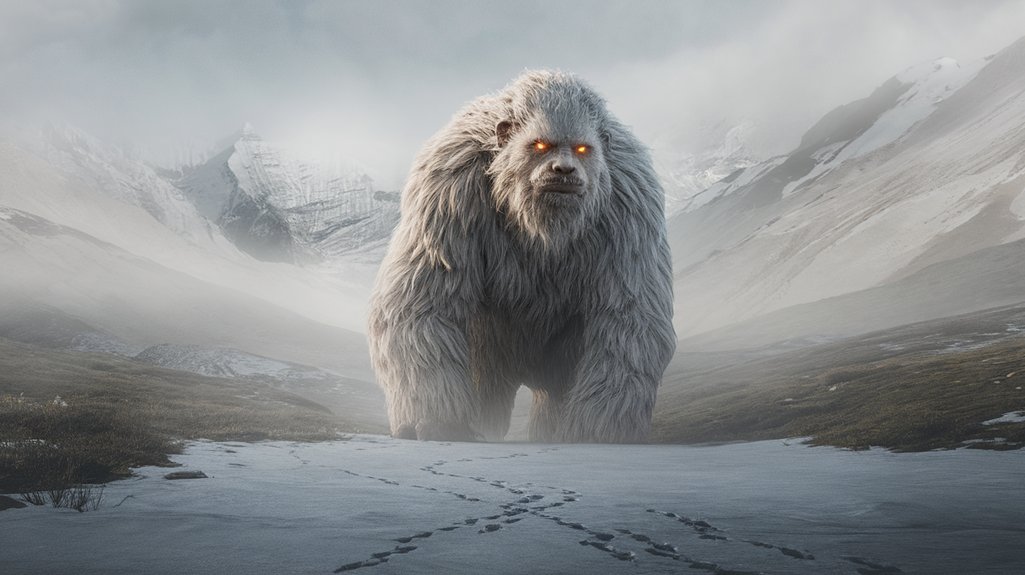
Amidst the snow-capped peaks of the Himalayas, the legend of the Yeti looms large, captivating adventurers and scholars alike. The Yeti, often described as an elusive, ape-like creature, has been a staple in Himalayan legends for centuries. You’ll encounter stories of Yeti sightings that blend the boundary between myth and reality, urging you to question what lies hidden in the vast, untamed wilderness.
These legends are not just tales but a cultural fabric woven through generations. Consider:
- Yeti footprints found in the snow, stirring debate.
- Sherpa folklore that speaks of the creature’s wisdom and guardianship.
- Scientific expeditions seeking tangible evidence.
- Global fascination with the mystery of the unknown.
- Cultural identity tied to the rich storytelling of the region.
As you explore these narratives, you’ll find that the Yeti symbolizes a bridge between human curiosity and nature’s mysteries, challenging perceptions and inviting deeper understanding.
The Minotaur
Once upon a time in the labyrinthine heart of Crete, the legend of the Minotaur emerged from the shadows of ancient mythology. You find yourself drawn into a tale where King Minos commands Daedalus to craft an intricate labyrinth design—an architectural marvel meant to confine a creature of terror. This half-man, half-bull monster, born of divine punishment and mortal folly, prowled the maze’s twisting corridors.
To appease the beast’s hunger and avoid its wrath, ancient sacrifices became a grim reality. Every year, seven Athenian youths and maidens were sent into the labyrinth, never to return. This ritual underscored the belief that the labyrinth’s design was as much a prison as a stage for destiny’s tragic play. Through this chilling narrative, you’re reminded of humanity’s age-old struggle with fear and the unknown, crystallized in the image of the Minotaur—a symbol of chaos lurking in civilization’s heart.
The Basilisk
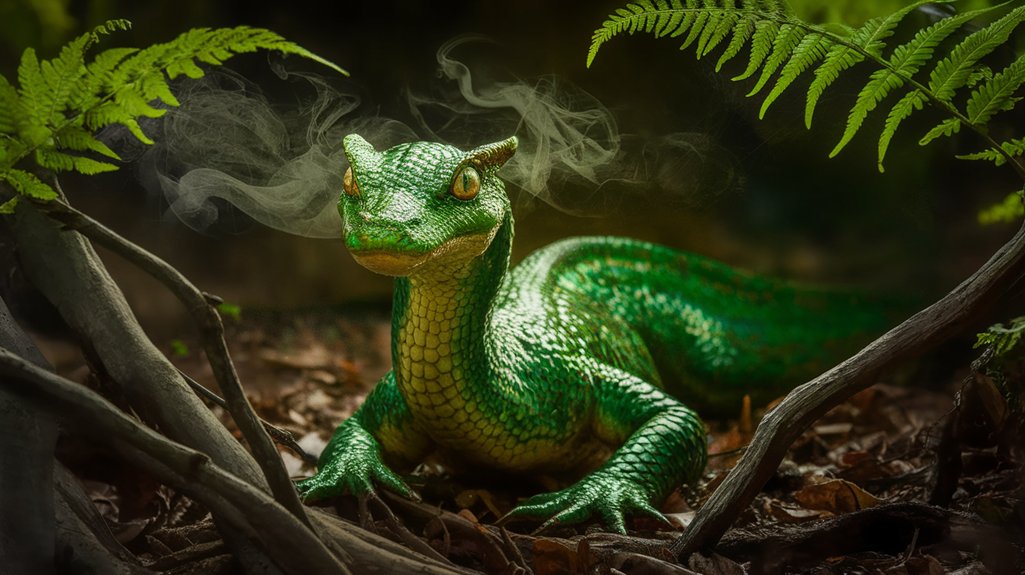
Imagine yourself in the heart of medieval Europe, where tales of the basilisk, a creature born from the egg of a serpent and the gaze of a rooster, spread fear and fascination. This mythical being, believed to kill with a mere glance, reflects ancient beliefs about the power of sight and the dangers lurking in unfamiliar lands. Today, the basilisk still captivates modern culture, inspiring everything from literature to video games, proving that its legacy is as enduring as its myth.
Origins and Ancient Beliefs
Though often shrouded in mystery and legend, the basilisk’s origins can be traced back to ancient mythology and folklore. You’ll find its mythical origins embedded in ancient texts like Pliny the Elder’s “Natural History,” where it’s described as a serpent with lethal abilities. The basilisk was feared across cultures, its legend evolving with each retelling. In your exploration, consider:
- Medieval bestiaries: These texts expanded its fearsome reputation.
- European folklore: It portrayed the creature as a symbol of death.
- Alchemy: Alchemists viewed the basilisk as a powerful ingredient.
- Cultural symbolism: It represented chaos and danger.
- Literature: Writers used it to evoke fear and mystery.
Understanding these origins helps you grasp why the basilisk captivated imaginations for centuries. Its story reflects humanity’s intricate relationship with myth.
Deadly Gaze Mythology
When you delve into the mythology of the basilisk’s deadly gaze, you uncover a tale that intertwines fear and fascination. This creature, often depicted as a serpent or rooster, boasts petrifying legends that have captivated storytellers for centuries. The basilisk’s most notorious trait is its lethal abilities—capable of killing with a mere look. In ancient texts, it’s described as the “king of serpents,” where its gaze turns onlookers to stone or causes instant death. These stories reflect cultural anxieties about unseen dangers, where the basilisk symbolizes the ultimate peril lurking in the shadows. Through its mythical narrative, you sense humanity’s ongoing struggle to comprehend and conquer the unknown, making the basilisk a timeless emblem of fear and intrigue.
Modern Interpretations and Influence
Moving from ancient lore to the present, the basilisk’s deadly gaze continues to captivate and inspire modern culture. As you navigate its modern adaptations, you’ll notice how it’s woven into various forms of entertainment and media. The basilisk embodies a powerful symbol in contemporary storytelling, reflecting cultural representation and fear of the unknown.
Consider these modern interpretations:
- Literature: J.K. Rowling’s “Harry Potter” series depicts the basilisk as a monstrous serpent.
- Film: “The Chronicles of Narnia” reimagines the creature with a petrifying stare.
- Video Games: Titles like “Dark Souls” feature it as a formidable enemy.
- Television: Shows like “Supernatural” reinvent it as a deadly trial.
- Art: Modern artists explore its symbolism in fear and power dynamics.
These interpretations ensure the basilisk’s legacy endures.
The Mermaid
As you delve into the enchanting world of mermaids, you’ll find these mythical creatures have captured human imagination for centuries, weaving their way into folklore and art across diverse cultures. Mermaid legends often reflect the fascination with the unknown depths of the sea, serving as a bridge between humanity and the vast, mysterious ocean.
In many cultures, mermaids embody aquatic symbolism, representing beauty, allure, and danger. From the sirens of Greek mythology to the selkies of Scottish lore, mermaids often symbolize the dual nature of the sea—both nurturing and perilous. These legends offer insight into how societies viewed the ocean as a source of life and a harbinger of storms and shipwrecks.
Frequently Asked Questions
What Common Traits Do Mythical Creatures Share Across Different Cultures?
You’d think mythical creatures are unique, yet they ironically share cultural similarities. Across cultures, they symbolize universal themes like fear, hope, or morality. These creatures narrate stories reflecting shared human experiences and symbolic meanings throughout history.
How Have Mythical Creatures Influenced Modern Literature and Media?
You’ll notice mythical creatures enrich fantasy genres, providing cultural symbolism that shapes narratives. They influence modern literature and media by blending ancient myths with contemporary themes, allowing audiences to explore universal human experiences through imaginative storytelling.
Are There Scientific Explanations for Mythical Creature Sightings?
You see shadows dance under the moonlit sky, and your mind weaves stories. Scientific phenomena, like optical illusions, and psychological explanations, such as cognitive biases, often stir these narratives, bridging the gap between reality and imagination.
How Do Mythical Creatures Reflect Societal Fears or Hopes?
You see mythical creatures as symbols of societal fear and hope. They reflect cultural anxieties through fear representation and embody aspirations with hope symbolism, shaping narratives that reveal collective desires and trepidations throughout history.
What Role Do Mythical Creatures Play in Folklore and Mythology?
Mythical creatures, cloaked in mystery, hold cultural significance by embodying societal values and fears. They serve a narrative function, weaving tales that entertain, educate, and preserve traditions, offering you deeper insights into the human psyche and cultural identity.
Conclusion
You’ve journeyed through tales of mythical creatures, realizing that, by coincidence, every culture has its own legends. These stories, from the kraken’s depths to the unicorn’s grace, mirror humanity’s innate curiosity. It’s no accident that the banshee’s wail and the basilisk’s stare stir the same thrill. These myths, blending fact and fantasy, reveal universal truths about fear, hope, and wonder. You’ve discovered that across time and place, imagination blurs reality, leaving a vivid cultural tapestry.

